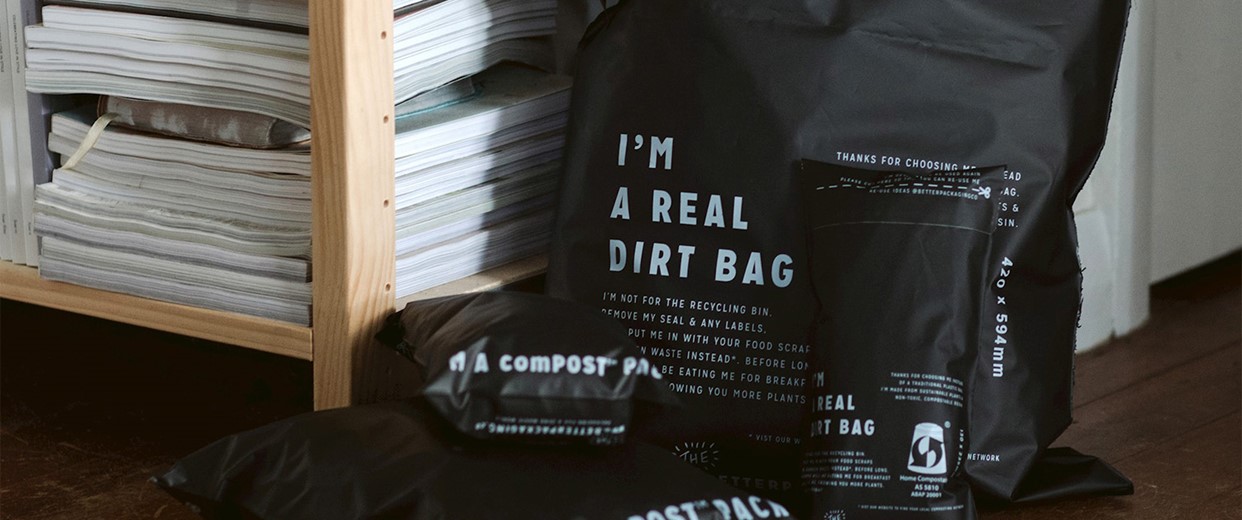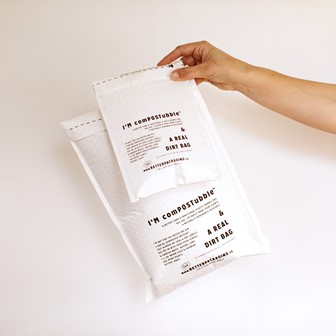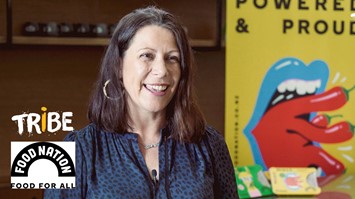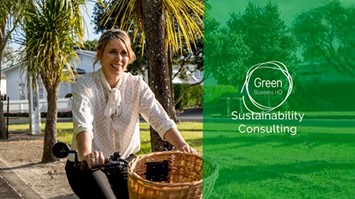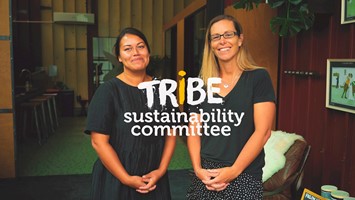The Better Packaging Company was founded by Rebecca Percasky and Kate Bezar in 2018. They’ve developed revolutionary sustainable packaging solutions for eCommerce and retail, boasting clients such as Ella McPherson’s wellness brand WelleCo, Rip Curl, Karen Walker, and Allbirds.
We spoke to Rebecca to hear more about Better Packaging’s values and tips for the workplace. Rebecca says sustainability's about doing things in a way that the world is protected while ensuring the ‘needs’ of the people who live in the world are met.

Why did you start The Better Packaging Company?
As we saw firsthand the extraordinary growth of eCommerce, we became aware, and frankly horrified, at how much plastic packaging was being used to post every online purchase and the amount of waste it was generating.
Our objective was to design and produce the most sustainable (yet fit-for-purpose) courier satchel possible. We understood that it wouldn’t be enough just to make something better, but we would also need to educate stakeholders as to its point of difference, how to re-use it and then how to dispose of the product responsibly.
We heard that everything in your office is secondhand! Why did you do this and where did you find it all?
Buying secondhand is one of the highest impact things you can do as a consumer. For our new office, we sourced all our furniture from online auction sites, friends, family and thrift stores. Heaters were borrowed from a staff member’s family, a toaster came from the Northhaven Waipu Hospice Shop, a rug was bought off a friend, desks from Trade Me, and ergonomic office chairs from All Heart Store. We go our Lundia shelving from Surplus Traders and refurbished computers from PB Tech with a 12-month warranty!
Sustainability and business haven't always gone hand-in-hand, have you noticed a change in how businesses approach sustainability now?
Having a sustainable office used to mean making sure you printed double-sided through the photocopier. It’s now far more wide-reaching and must be deeply embedded in the culture of an organisation, so much so that many will now have a sustainability manager
Should every company have sustainable values?
Absolutely – there is no excuse anymore. Consumers are educated and expect more from companies. They want to purchase from brands that align with their values. Sustainability is now significantly driving consumer behaviour.
There is an incredible opportunity to change the way we operate for the betterment of everyone. Sustainability is very much a journey without a destination or finishing line. It is an iterative process of improvement and a commitment to continuously reducing your impact. It’s a very rewarding journey though and pretty addictive.
If I was a CEO reading this and wanted to start the journey, what are some first steps I could take?
- Compost your food scraps! Over 50% of what ends up in the landfill is organic and could be composted. It’s simple for companies to compost in NZ. Companies such as Reclaim and WeCompost will provide compost bins & pick up as regularly as required
- Provide keep cups and re-usable takeaways containers for your team so that when they get their coffees and sushi they don’t have to use single use plastics.
- Have your computers, screens, heaters, lights etc on a timer so that they always turn off when you’re not using them
- Become aware of what you purchase, use and how you package. Is it the most sustainable option?
Start with one thing today!
How would I get my employees on board?
Make it easy and fun for your team. Start by having a really open and honest discussion about why it’s so important, what you want to achieve and understand what their concerns are. It will be during this meeting that you will spot those who are super passionate about sustainability. They are your champions, share the load with this group. You will find it gets a life of its own once your team gets onboard.
Focus on one easy change, communicate it clearly, embed it so it becomes second nature and then implement the next change.



